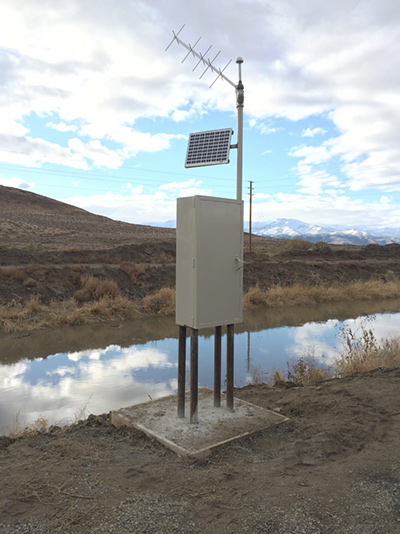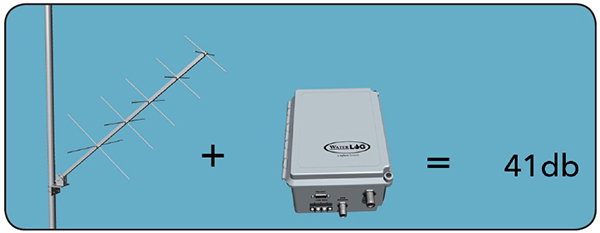Selecting the Correct GOES Antenna Type
Did you know that selecting the wrong equipment for your monitoring site can affect your power level? Understanding the pieces of your system and how each piece affects power is the key to receiving continuous data. This blog post will focus on your GOES radio system and how to make adjustments for different types of antennas.
Geostationary Operational Environmental Satellites (GOES) radios are a telemetry option that provides several advantages to a remote monitoring site:
First, telemetry reduces costs in time and resources by greatly reducing the need of traveling to sites to download data. With GOES, telemetry options are not restricted by cellular coverage or distances. Besides the cost of the equipment GOES transmissions are free; there are no data fees or monthly service fees associated with GOES data.
Second, telemetry provides up-to-date continuous environmental data allowing decision-makers to make decisions based on the most current data available. Maintaining a healthy GOES system will provide continuous up-to-the-hour data.
The goal of a GOES system is consistent data delivery, and to do that it must consistently transmit to the satellite at the approved power level (41db). To assist in maintaining an approved power level, we have created a guide to help you understand the effects of your equipment and how to make adjustments to keep your GOES data consistently coming in.
Selecting a GOES Antenna Type
The H-2221 V2 GOES radio was originally certified with our own 11db gain antenna. Some users have used the H-2221 V2 GOES radios with antennas with less gain. In this case the RF output power may not be enough to produce reliable transmissions. This option allows the user to select an 11db Yagi antenna, a 8 db Top Hat antenna, or a 5 db gain Omni antenna.

This option is only available from the PC menu and is under the GOES H-2221 Diagnostic menu (option A). This option allows the user to select the antenna type in use. The antenna type determines the RF output power level of the transmitter. The H-2221 V2 transmitter will adjust its output power based on the antenna type selected in order to maintain the proper level of effective radiated power. The options are listed below:
| Antenna Type |
Antenna Gain |
Radio Power (db) |
Total Power (db) |
Total Power (Watts) |
| Yagi |
11 db |
30 db |
41 db |
1.41 Watts |
| Top Hat |
8 db |
33 db |
41 db |
2.82 Watts |
| Omni |
5 db |
36 db |
41 db |
5.64 Watts |
Note: The user must make sure this option is set correctly or the H-2221 V2 radio may transmit more power than is acceptable to the satellite. When looking at the raw received satellite transmissions, the power level must not exceed a level of 41.
Additional Blog Posts of Interest
Irrigation District Relies on Continuous Water Usage Information
How to Keep Interferences from Affecting Your Water Level Data
Technologically Advanced Amazon Bubbler for Long-Term Level Monitoring
Streamflow Monitoring Sheds Light on Early Flood Warning for San Francisco Bay Area